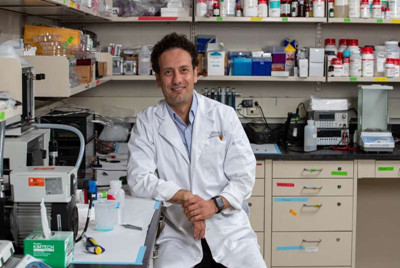
Researchers at McMaster University have created a new coating to prevent clotting and infection in synthetic vascular grafts, while also accelerating the body's own process for integrating the grafted vessels.
Variants of the coating material, described in two new articles published by the journals Small (published today) and ACS Biomaterials Science and Engineering (published Nov. 8), are "smart" coatings that line the vessels and prevent clot formation and bacterial adhesion while selectively attracting targeted cells that foster the growth of natural vessel walls, promoting faster, smoother healing.
Each article verifies the success of a different formulation of the coating, one designed for Dacron grafts (Small), the other for Teflon grafts (ACS Science) - the two major materials used to make artificial vessels. The smart materials are made to coat the inner walls of new sections of replacement vessels typically deployed after injury or disease.
Synthetic materials currently used in vascular grafts can be problematic because their surface properties and texture can collect cells and initiate blood clotting, a risk which requires patients to use anti-coagulant drugs such as warfarin for long periods.
These surfaces can also accelerate the buildup of microbes that can cause infection.
"These surfaces repel non-desirable elements in the blood: infections and clotting," says Tohid Didar, the McMaster mechanical and biomedical engineer who led the research team. "The hope is that down the road we can use less and less anti-coagulant medication on patients and at the same time that we can assure that the site remains uninfected."
The researchers collaborated with Jeffrey Weitz of the Thrombosis and Atherosclerosis Research Institute and McMaster chemical engineer Zeinab Hosseini-Doust to test the new material in lab experiments using human tissue.
The components used in the material have already been approved for use in humans, which is expected to shorten the process for getting the new material approved for use in clinical settings.
Didar's team had previously developed selectively repellent surfaces for other applications, but this is the first for use in blood vessels, where infection, clotting and rejection make the use of these grafts challenging.

